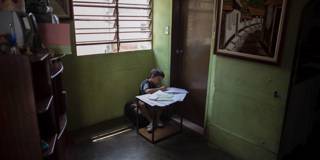Because pandemic-related school closures could be long-lasting or recurrent, policymakers must radically rethink how to deliver education so that all children are learning. Without major steps to put the most marginalized children at the center of our education systems, the world risks losing an entire generation to illiteracy, ignorance, and dependence.
WASHINGTON, DC/FREETOWN – The coronavirus has shuttered schools for more than one billion children around the world. Because the vast majority have been unable to make the transition to online education, school closures have widened the pre-existing gap between how much rich children and poor children learn.
The challenges are greatest in the poorest countries. In Sub-Saharan Africa, for example, about one in ten students have a computer at home, and more than half live in households without electricity. Unreliable Internet connections, limited access to mobile devices, and high costs put e-learning further out of reach.
Even before COVID-19, developing countries were facing a serious education crisis. Today, 53% of children in low- and middle-income countries cannot read or understand a simple story by age ten. In the poorest countries, this figure is as high as 80%. As school closures drag on, this crisis risks becoming a catastrophe.

WASHINGTON, DC/FREETOWN – The coronavirus has shuttered schools for more than one billion children around the world. Because the vast majority have been unable to make the transition to online education, school closures have widened the pre-existing gap between how much rich children and poor children learn.
The challenges are greatest in the poorest countries. In Sub-Saharan Africa, for example, about one in ten students have a computer at home, and more than half live in households without electricity. Unreliable Internet connections, limited access to mobile devices, and high costs put e-learning further out of reach.
Even before COVID-19, developing countries were facing a serious education crisis. Today, 53% of children in low- and middle-income countries cannot read or understand a simple story by age ten. In the poorest countries, this figure is as high as 80%. As school closures drag on, this crisis risks becoming a catastrophe.